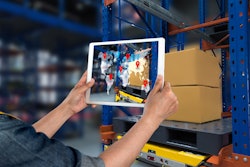
Bosses need to prepare their staff accordingly to embrace new technology as an opportunity, rather than perceive it as a threat. It takes both clear communication and a willingness to learn – and especially around the cultural shift to slick and agile cloud solutions from an onerous and manual paper-based system.
At SnapFulfil, we’ve supported many clients in the journey away from paper-based warehouse management. Implementing the operational improvements is often the most straightforward element of the transition to a WMS, but bringing people along with you is more nuanced. DC operatives will be used to a certain way of working and will need to truly understand the benefit of change and feel fully supported throughout the journey.
Workers fed up with manual tasks can quickly get excited about the time and labor-saving efficiencies of digital, but then fearful about the associated training and learning of new skills. But this is a pattern that is present in every aspect of life. People need time to process things, internalize matters and come to accept them.
One of our clients summed up the challenge perfectly, suggesting that introducing a warehouse operative to a tier 1 WMS without the proper support is: “like putting people used to driving a family sedan into a F1 car and expecting them to figure it out!” So it pays to plan ahead and create internal comms and strategies to win the hearts and minds of managers and operators who cling to the old and established (but highly inefficient) ways and resist change.
Any change management plan worth its salt must identify and communicate the obvious benefits in a meaningful way, so for me the following five established fundamentals go a long way toward achieving buy-in from your team:
Formalize what’s about to happen
Start by developing a list of actions you have to take before implementing the WMS, including all the digital advancements, new dashboards and other systematic procedures you’ll need to learn.
Talk to your teams and all of them - Customer Service, Warehouse, HR, Finance, IT, etc. They will all have their own ideas where the existing problems are – are your workers empowered to be confident to raise their hand if something isn’t working?
Then define the change itself for all levels of staff to build a clear picture of the training and pre-emptive support required to get everyone on the same page.
Determine what to measure and how
State your goals clearly and also break them down relative to change management. How quickly do you want teams to start using the new system? What measurements are required after you implement a phase of the project? How can you ascertain if someone is using the software correctly?
Narrowing each big goal into a small measurable piece for each position helps you ensure that you’ve thought about the WMS holistically and are ready for the knock-on effects it may have. For example, more efficient workers mean inventory and accuracy both improve, with less time required to fix miss-picks and address performance issues, creating more opportunities to explore further cost-saving improvements.
Prioritize help and support
This is a big one for me
Some of your team may never have used a computer system before, so the task could be daunting for them. They will still have experience though - make sure they know that is just as important. Bring your team along the journey with you; they will have valid concerns and questions along the way, so providing a feedback tool is essential. You’ll also need to communicate that feedback to everyone involved. For example, consider setting up a series of online informational sessions, or lunch & learns, to build an open line of communication between management and your pick, pack and ship teams.
Consider the skills that your current workers have – they might not be where you expect. For example, gamers are amongst some of the brightest DC staff I know, they tend to have a natural aptitude to problem solving, testing, thinking outside of the box and have the ability to concentrate on many things for long periods of time. Also think about generational differences as each one has something unique to add to the process, whether it be considered thinking, experience, confidence, multi-tasking, extended focus time. There is a good chance each one of these skills can help you bring together the whole you need to make your WMS change easier.
Promote training and professional development – help workers develop new skill sets to manage these more advanced WMS solutions. Providing training sessions is a great way to show you’re investing in people as well as technology and will help increase team satisfaction and performance, as well as preparing them for their new roles.
In short, make it easy for your people to ask for help and you’ve got the best chance of getting ahead of any implementation and adoption issues. This along with proper planning, communication and investment will help speed your DC operations – and your workers – into this here-to-stay and rewarding age of digital fulfillment.
It’s clearly not just an IT decision and it pays to involve and consult your valued team every step of the way.



















